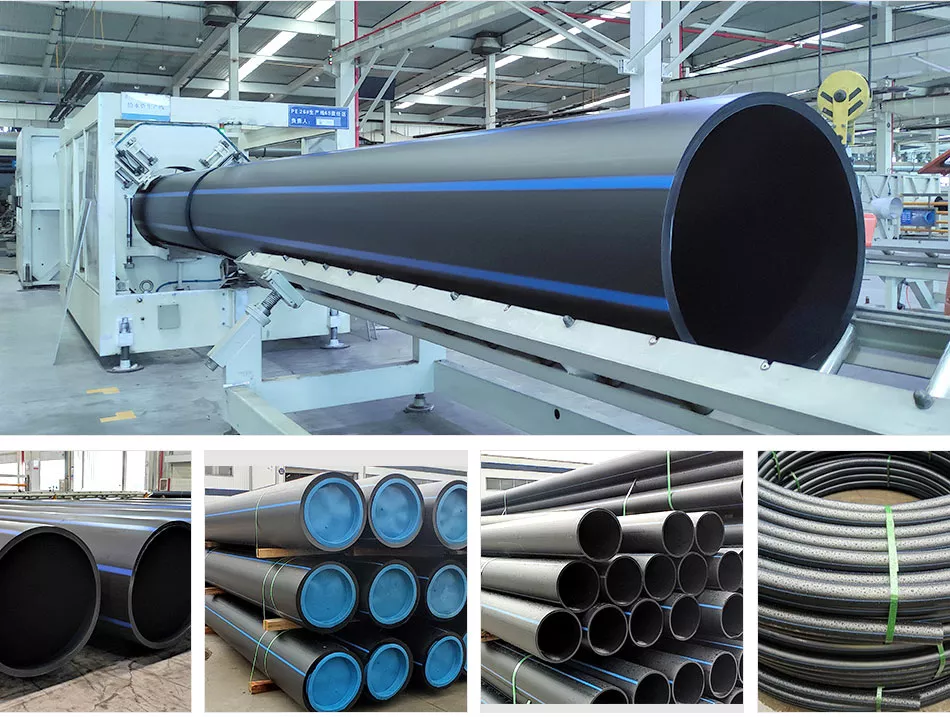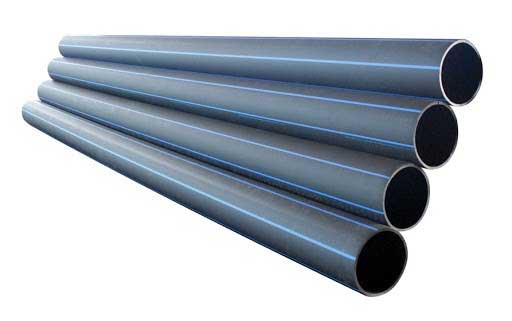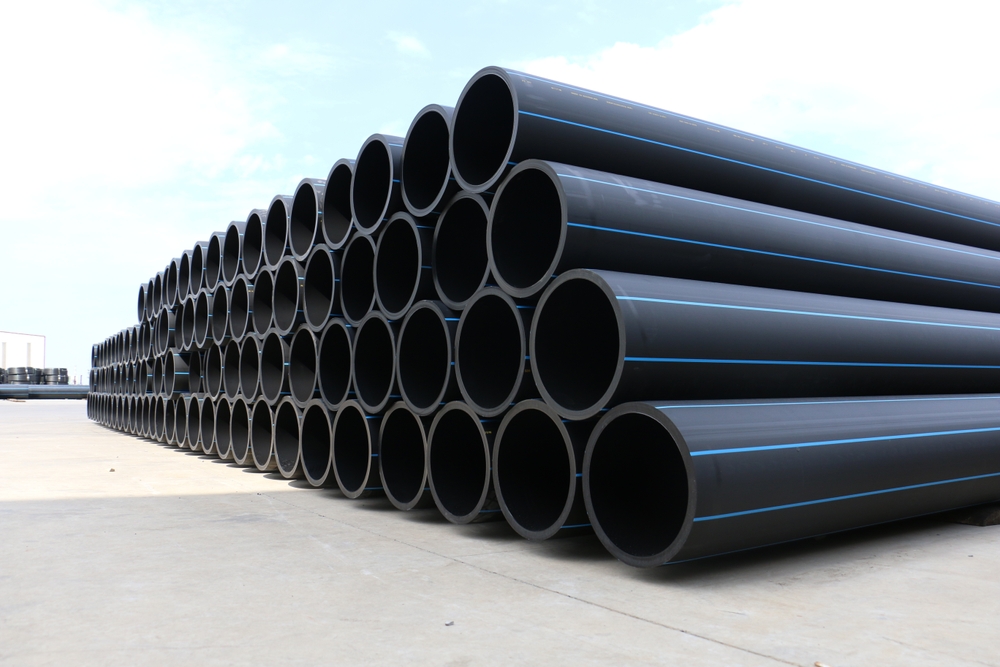Where to Source Midland TX HDPE Pipe Fittings in Stock for Urgent Orders
Explore the Manufacturing Refine Behind High-Quality HDPE Pipeline and Its Applications
The production procedure of top quality HDPE pipes is detailed and methodical. It starts with the selection of basic materials that boost performance. Following this, ethylene goes through polymerization to create material, which is after that formed via extrusion. Quality assurance is paramount, guaranteeing that the final product meets stringent standards. The journey of HDPE pipelines does not finish with production. Their applications across various markets disclose a wider relevance worth checking out.
Recognizing HDPE: Characteristics and Advantages

High-density polyethylene (HDPE) is a versatile polycarbonate understood for its sturdiness and resistance to different ecological aspects. This material shows exceptional tensile strength, making it appropriate for demanding applications. Its low-density structure contributes to a light-weight item, promoting simplicity of handling and installment. HDPE also showcases impressive resistance to chemicals, which lessens degradation when subjected to harsh substances.
The material's reduced dampness absorption additionally improves its longevity, making it optimal for use in pipelines and storage space tanks. Additionally, HDPE is immune to ultraviolet (UV) radiation, guaranteeing that items preserve their honesty even when revealed to sunlight. Its flexibility enables for the creation of complex forms without jeopardizing stamina. The environment-friendly nature of HDPE, typically stemmed from recycled materials, adds to its allure, advertising sustainable techniques in production. Overall, these residential or commercial properties and advantages make HDPE a favored choice for different commercial and customer applications.
Basic Material Choice for HDPE Manufacturing
The option of raw products for HDPE manufacturing is important to verify the end product satisfies the preferred requirements and top quality standards. High-density polyethylene (HDPE) is mainly produced from polymerized ethylene, acquired from fossil fuels such as gas or petroleum. The high quality of these feedstocks substantially affects the mechanical and thermal residential properties of the last HDPE.
Ingredients likewise play a considerable function in enhancing HDPE's efficiency, consisting of antioxidants, UV stabilizers, and colorants, which enhance resilience and resistance to environmental variables. The choice process should consider not just the chemical structure of the raw materials but likewise their processing features to assure effective production.
Additionally, the sourcing of raw products ought to focus on sustainability and compliance with environmental laws, as accountable techniques are essential in today's market. Inevitably, cautious basic material choice lays the structure for producing high-grade HDPE pipes appropriate for diverse applications.
The Extrusion Process: Forming HDPE Pipeline
The extrusion procedure plays an important role fit HDPE pipes, starting with meticulous material prep work methods that ensure optimal circulation and uniformity. Equally crucial is the design of the die, which directly influences the final dimensions and surface quality of the pipeline. With each other, these elements add considerably to the performance and quality of HDPE pipe manufacturing.
Product Preparation Methods
Effective production of HDPE pipelines starts with meticulous material prep work methods, especially the extrusion procedure. Throughout this phase, high-density polyethylene material is first dried to eliminate dampness, ensuring perfect flow attributes. The material is then fed into the extruder, where it goes through home heating and melting, changing into a thick state. This heating procedure is thoroughly controlled to maintain the material's integrity and performance. The liquified HDPE is required via a die, shaping it right into a continual pipeline form. Appropriate temperature level management during extrusion is important, as it directly influences the material's properties and the end product high quality. Once formed, the HDPE pipe is cooled down and cut to specified lengths, all set for succeeding processing and applications.
Die Design Significance
Accuracy in die design plays a vital duty in the extrusion process of HDPE pipelines. The die functions as the last shaping device, directly affecting the pipe's measurements, wall surface thickness, and surface area coating. A well-designed die assurances uniform product circulation, minimizing defects such as abnormalities and vulnerable points. The geometry of the die must be enhanced to accommodate the particular properties of HDPE, including its thickness and thermal actions during extrusion. Additionally, the cooling rate of the material as it goes through the die can markedly affect the pipeline's structural stability. Investing in innovative die technology is crucial for manufacturers aiming to create high-quality HDPE pipes that meet sector standards and client assumptions.
Quality Assurance Measures in HDPE Manufacturing
Although different variables affect the top quality of HDPE pipe manufacturing, effective high quality control procedures are essential to ensure uniformity and reliability in the last item. Secret quality assurance methods consist of strenuous product assessment, verifying that the raw polyethylene satisfies recognized standards for pureness and thickness. During the extrusion process, criteria such as temperature level, stress, and cooling time are carefully monitored to keep dimensional precision and architectural stability
In addition, post-production screening is essential; suppliers usually carry out hydrostatic tests to analyze the pipe's strength and resistance to stress. Visual examinations for surface issues additionally enhance quality assurance. Certification from relevant standards organizations, like ASTM or ISO, gives an extra layer of integrity. By executing these complete quality assurance actions, producers can minimize issues, boost efficiency, and make sure that the HDPE pipelines meet the details demands of numerous applications, eventually bring about customer contentment and count on the item.
Applications of HDPE Pipeline Throughout Industries
HDPE pipes are used throughout numerous markets because of their sturdiness and versatility. In water distribution systems, they guarantee reliable shipment, while in wastewater administration, they supply trusted remedies for waste transport. Additionally, agricultural watering networks take advantage of HDPE's resistance to corrosion and versatility, making it a perfect choice for contemporary farming methods.

Water Distribution Equipments
A substantial variety of industries count on high-density polyethylene (HDPE) pipelines for efficient water distribution systems. Understood for their sturdiness and resistance to deterioration, HDPE pipes are widely utilized in local water supply networks, farming watering, and commercial applications. Their light-weight nature facilitates easy handling and setup, lowering here labor costs and time. Additionally, HDPE pipes can accommodate different pressure levels, making them appropriate for both low and high-pressure systems. hdpe pipe suppliers Midland TX. The versatility of the material enables smooth assimilation right into existing framework, lessening the demand for comprehensive excavation. Furthermore, HDPE's resistance to chemical leaching warranties that the water supplied stays safe and tidy, making it a perfect selection for preserving the high quality of safe and clean water throughout different markets
Wastewater Monitoring Solutions
Efficient water distribution systems likewise lead the way for cutting-edge wastewater management services, where high-density polyethylene (HDPE) pipes play a significant duty. Popular for their durability and resistance to corrosion, HDPE pipelines are perfect for delivering wastewater in numerous setups. Their adaptability enables easy installation in complex atmospheres, lessening the demand for considerable excavation. In addition, HDPE's smooth indoor surface area minimizes friction, improving flow rates and efficiency. These pipes are also immune to chemical leaching, ensuring that contaminants do not compromise the surrounding atmosphere. Industries, communities, and therapy facilities progressively depend on HDPE pipes for their dependability and longevity, making them a preferred selection for modern-day wastewater monitoring systems. This flexibility emphasizes the crucial significance of HDPE pipelines throughout numerous applications.
Agricultural Irrigation Networks
Agricultural watering networks profit greatly from making use of high-density polyethylene (HDPE) pipes, which give effective and trustworthy water delivery to plants. HDPE pipelines are lightweight, making them simple to carry and set up, while their versatility enables numerous setups in varied surfaces. These pipes demonstrate excellent resistance to deterioration, chemicals, and UV radiation, making sure toughness in severe farming atmospheres. Additionally, their smooth indoor surface lessens friction loss, enhancing water flow and reducing power expenses related to pumping. The longevity of HDPE pipelines, often exceeding 50 years, adds to decrease maintenance and replacement costs. Farmers significantly depend on HDPE pipes to enhance watering effectiveness and advertise lasting agricultural techniques, ultimately leading to boosted crop returns and resource conservation.

Future Trends in HDPE Pipeline Technology
As the need for lasting and effective infrastructure expands, developments in HDPE pipe innovation are poised to change numerous industries. Arising trends include the integration of clever innovations, such as sensors and IoT capacities, which assist in real-time tracking of pipe conditions, reducing upkeep prices and avoiding leakages. In addition, the growth of innovative production techniques, such as 3D printing, is allowing the manufacturing of facility, tailored pipeline styles that satisfy specific task needs.
Moreover, the emphasis on recycling and round economic situation techniques is driving the development of HDPE pipes made from recycled materials, improving sustainability. Enhanced jointing techniques, such as electro-fusion and mechanical fittings, are also improving setup effectiveness and integrity. The expanding emphasis on environmental guidelines is pushing makers to take on greener production procedures, making certain that HDPE pipes not just satisfy industry criteria however additionally promote a more lasting future for infrastructure growth.
Often Asked Questions
Just How Does HDPE Contrast to Other Plastic Materials?
HDPE outmatches many other plastic products pertaining to durability, chemical resistance, and flexibility. Its reduced density and high tensile strength make it perfect for various applications, frequently going beyond options in both performance and long life.
What Are the Environmental Influences of HDPE Manufacturing?
The environmental influences of HDPE manufacturing include greenhouse gas exhausts, energy usage, and possible air pollution from producing processes. In addition, incorrect disposal can lead to soil and water contamination, raising worries about lasting environmental effects.
Can HDPE Water Lines Be Reused?
Yes, HDPE pipes can be recycled. Several facilities accept utilized HDPE for handling, changing it right into new items. This recycling contributes to sustainability initiatives, minimizing plastic waste while conserving resources and power in the manufacturing cycle.
What Is the Life Expectancy of HDPE Piping?

How Do Temperature Variations Impact HDPE Pipeline Efficiency?
Temperature level variants substantially impact HDPE pipe performance, impacting versatility and stamina. High temperatures can cause softening, while reduced temperature levels might create brittleness, inevitably affecting the pipeline's durability and suitability for various applications in diverse environments.